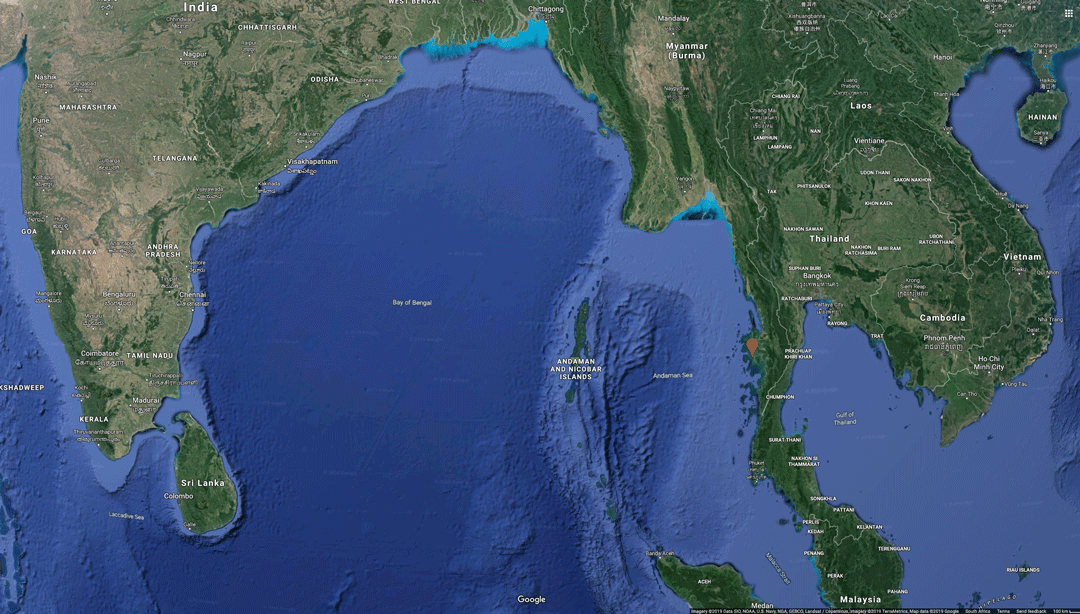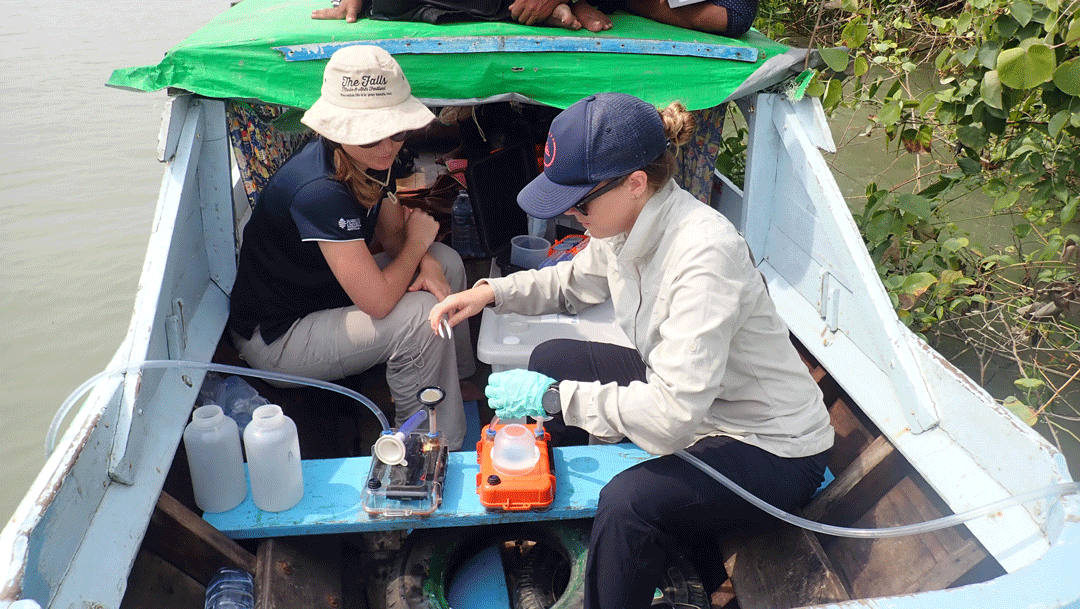Are Myeik’s thriving mangroves a safe haven for sawfish?

Aboard our boat and approaching Daung Kyun, also known as Ross Island, an island in the Myeik Archipelago. We were in search of mangrove lined tidal creeks to collect eDNA samples in search of sawfish. In 2015, a sawfish was captured nearby by a local fisherman. Photo © Madalyn Cooper
The Myeik Archipelago, located in the southern tip of Myanmar, is comprised of hundreds of islands and contains some of the best-preserved mangrove forest that we had seen in our journey through parts of South East Asia searching for sawfish. During this trip, the Global Sawfish Search team had set out to collect eDNA samples from the Myeik Archipelago and the Irrawaddy Delta in Myanmar, the Mekong River in southern Vietnam, and coastal habitats surrounding Singapore. What set Myiek apart from other places was the tall, dense and diverse mangroves that were almost untouched except for scattered pockets of development by local villagers who lived on the water’s edge. It was a far cry from the human development and destruction of mangrove forests we had just seen in other parts of South East Asia. I couldn’t help but wonder if this ecosystem might be sustaining a small population of sawfish.

The location of Myeik Archipelago in Myanmar (Burma). Photo © Google Maps | Google
Flora and Fauna International, who we were collaborating with for this expedition, and other local conservation groups are working to greatly increase survey effort to document biodiversity. It is known that the region supports populations of multiple threatened terrestrial and marine species, including pangolin, hornbill, otter, dugong, manta rays, whale shark and sea turtle. We wondered if it could also be home to a remnant population of sawfish.

Collecting eDNA samples as a storm passes around us and watching the falling tide reveal a steep and muddy embankment. Photo © Madalyn Cooper
After spending a week in Myeik we had come to understand that the mangrove forests were a rich food source for local fisherman. We had hired local boats and engaged with local fisherman to help us access the parts of the extensive mangrove forests. Through translation from Burmese to English, we spoke about fishing methods and learnt that despite a ban on shark fishing in Myeik local fisherman were still catching many different shark species that were eventually sold to markets across the southern border in Thailand. Sharks were not the primary catch; prawns were the main source of protein and income for local folks that lived on floating villages on Myeik’s islands.

We’re very thankful that eDNA sampling does not require an elaborate set-up and it can be done in most situations on any kind of vessel. Photo © Myat Wai Yan Oo
Conversation with local fisherman was difficult because it was restricted to translation and hand gestures, but I always carried a sawfish sticker that allowed me to point and ask very simply if they had ever seen one. Throughout other parts of South East Asia, the common response was that they’ve heard about them but never seen one in their lifetime. Unlike these responses, there were a group of fishermen in Myeik that had seen and captured a sawfish as recently as 2015. It came as no surprise to learn that they had sold this sawfish to a market in Thailand, but I felt conflicted in my sense of ability to help preserve and protect sawfishes that might still live in the area. We had gone to great lengths to access some very remote regions throughout South East Asia to collect samples that might give us information about remnant populations of sawfish. But the heartfelt outcome of this expedition was understanding that there is a great deal of work yet to be done to assist in providing alternative livelihoods and improving education about conservation, which are likely to have greater implications for threatened species conservation that is an eDNA survey. We left Myeik with a feeling that the wonderfully preserved mangroves may be a home to sawfish, but are still dwelling on the thought that there might be very little we can do but to add sawfish to a list of threatened species that are under increasing threat from development and habitat destruction because of the growing population and demand for tourism in the region. So now we wait for the results of laboratory analysis when we will know just how important this area may be for sawfish.
